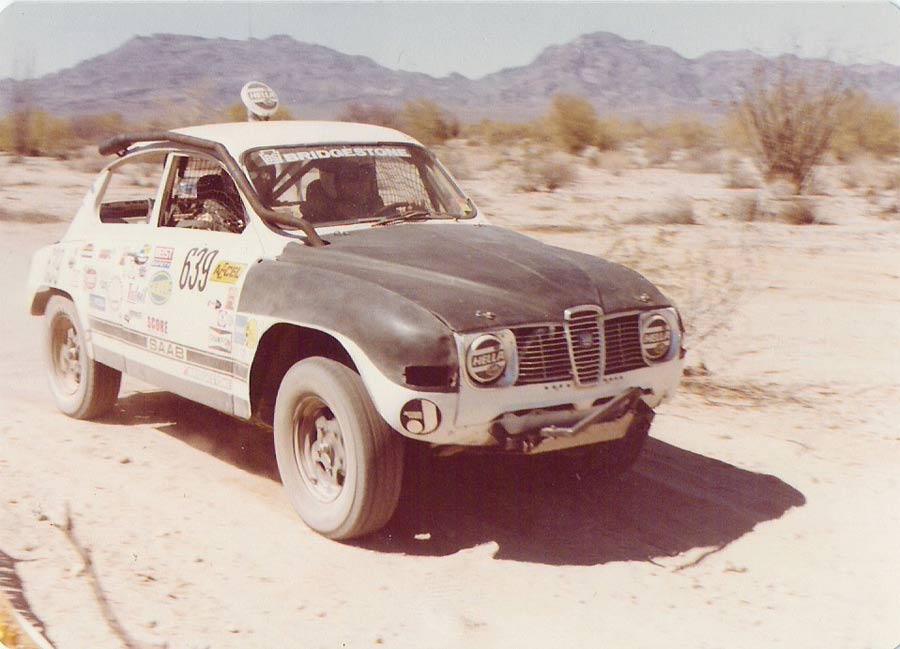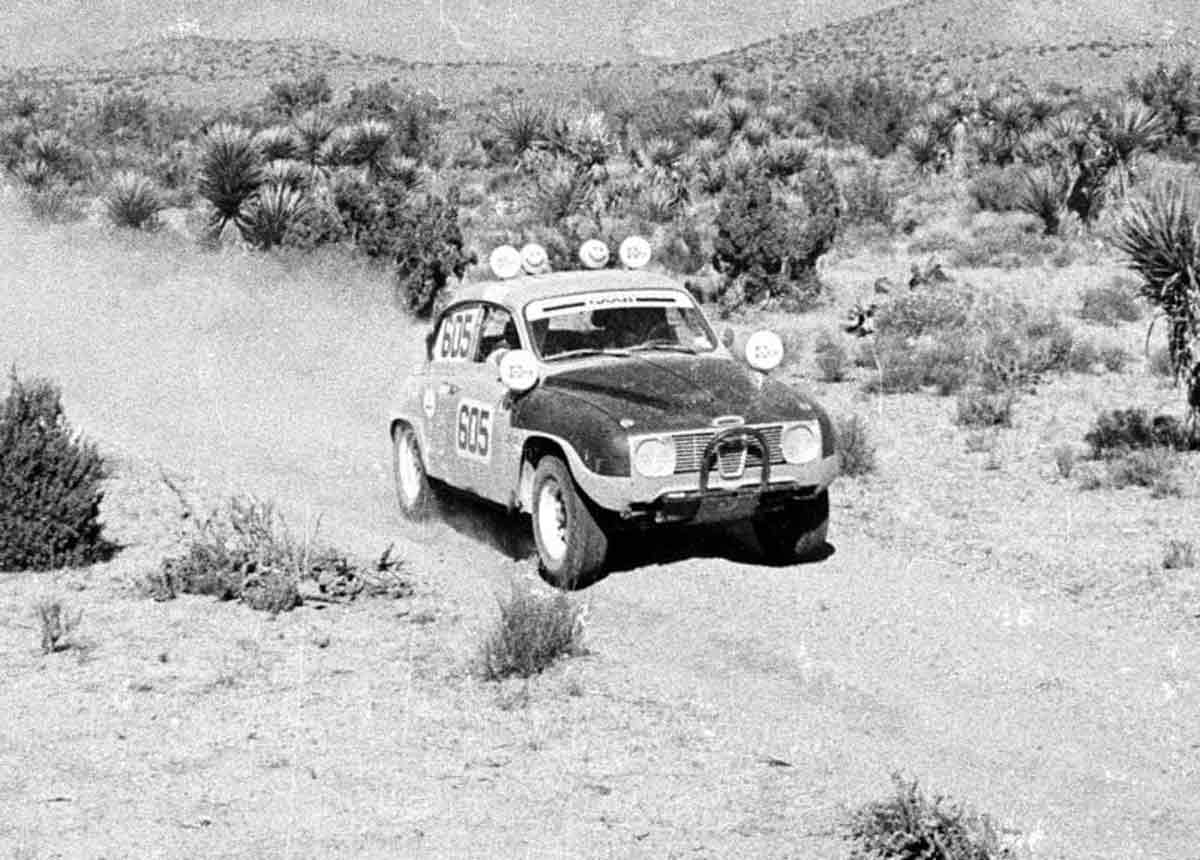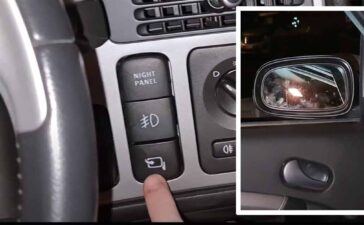Here is a very interesting Saab story that was shared on one of the many Saab internet forums by an exceptional person Justine Johnston. She has been a big fan and connoisseur of Saab cars for more than 50 years, also an occasional participant in various car races, of course in Saab cars.
Her story testifies to an interesting past and the success of Saab cars on the North American continent, as well as to the people who were credited with promoting Saab cars.
Table of Contents
The Winning Off-Road Saab 96
According to Justine’s testimony, in the picture above is a photo of Bill Carpenter‘s 1976 SCORE Class 6 Championship wining Saab 96. According to the same testimony we had to pass on to Saab to readers around the world, It was one of 3 cars brought over from Sweden in 1970 for Erik Carlsson and Ingvar Lindqvist for the 1970 Mexican 1000 Ensenada to La Paz race (the original name for the Baja 1000).
At that time, Lindqvist was the Culver City SAAB dealer and about 1973 he sold Carpenter one of the cars. However, Justine is not sure which of these three cars is the one in the picture above, but she is sure that it is a purpose-built Saab race car because it did not have basic body protection and was of a completely unusual construction.
Saab Built Two Types of Cars for Rally
One of the interlocutors in the discussion, Brian Ransom, who is also an expert on Saab cars and motor sports, adds that the story related to this picture and the race is even more interesting than at first glance. To his knowledge, Saab built two types of rally cars. One that was factory “built to the hilt” for the factory drivers like Erik Carlsson. Those are extremly rare and were call “works” cars. They were full on, fully modified cars. Bodies, suspensions, engines, etc.
According to this fact, the testimony given by Justine is quite correct, and the picture certainly shows one of those three factory-highly modified cars. The second type of rally car is what you referred to as the “T” car or the “Baja” (T-car = competition car). These cars were sold to the general rally public. As stated, also they did not have undercoating. The bodies were stiffened, extra spots welds added as well as better suspensions. The topping on the ice cream was a “vivid orange” paint job. Other than that they were all factory. It was up to the buyer to determine which of the F.I.A. approved mods they wanted to make. Typically there had to be 1,000 produced for F.I.A. homologation. These are also rare.
How This Saab Beat the Competitors
Let’s go back to the story of this race. Interestingly, in that race, this was the winning car. Why was the Saab wining? Justine reveals the secret of Saab’s success at the time in this off-road race – The rules then required almost stock suspension (it could be strengthened but the pivot points and lengths could not be moved) a SAAB 96 had 5 1/2 inches of wheel travel which is about 2 inches more than most cars. Add to that a top speed of around 105 to 110 mph when its competition had around 85 mph. Small, relatively light, good handling and indestructible engine. The perfect package for the long races. Interesting, This car has occupied a space in her shop and hasn’t moved in 30 years.
After these races and successes, when the Mexican 1000 was revived as the Baja 1000 in 1979 Carpenter took a year off to build the Saab 99 in which he won. He needed one more co-driver (there is a “Driver of record” and 3 co-drivers allowed) because one couldn’t make it and Jusiten got invited to go on her first off-road race.

Non-factory Saab Off-Road cars
All this story that we have to save from oblivion was followed by another witness of that time, Mark Rheude, who at that time also participated in off-road races with Saab.
He aslo raced and chased the off-road SAAB with Arne Gunnarsson and his family in late 70’s and early 80’s. According to him, at the time recreating the factory rallye cars was not that difficult. Arne was going to Sweden once or twice a year then and was able to bring parts and specifications for the competition cars back to California.
They built a few cars for off-road from those specs, including a SAAB 95. Most of the reinforcement was in the engine compartment and front suspension. This Team ran 2 to 3 Bilsteins on each side of the front. 95 rear axles are a bit bigger and stronger so they were used. Also, they removed the undercoating with “a torch and scraper” and made the cars as light as they could using lexan and cutting the fenders to allow for the bigger tires.
Mark also remembers one interesting detail, and that is that Arne told him that Saab was not interested in hiring a Saab 96 in racing, but offered him a Saab 99 which needed market promotion.











